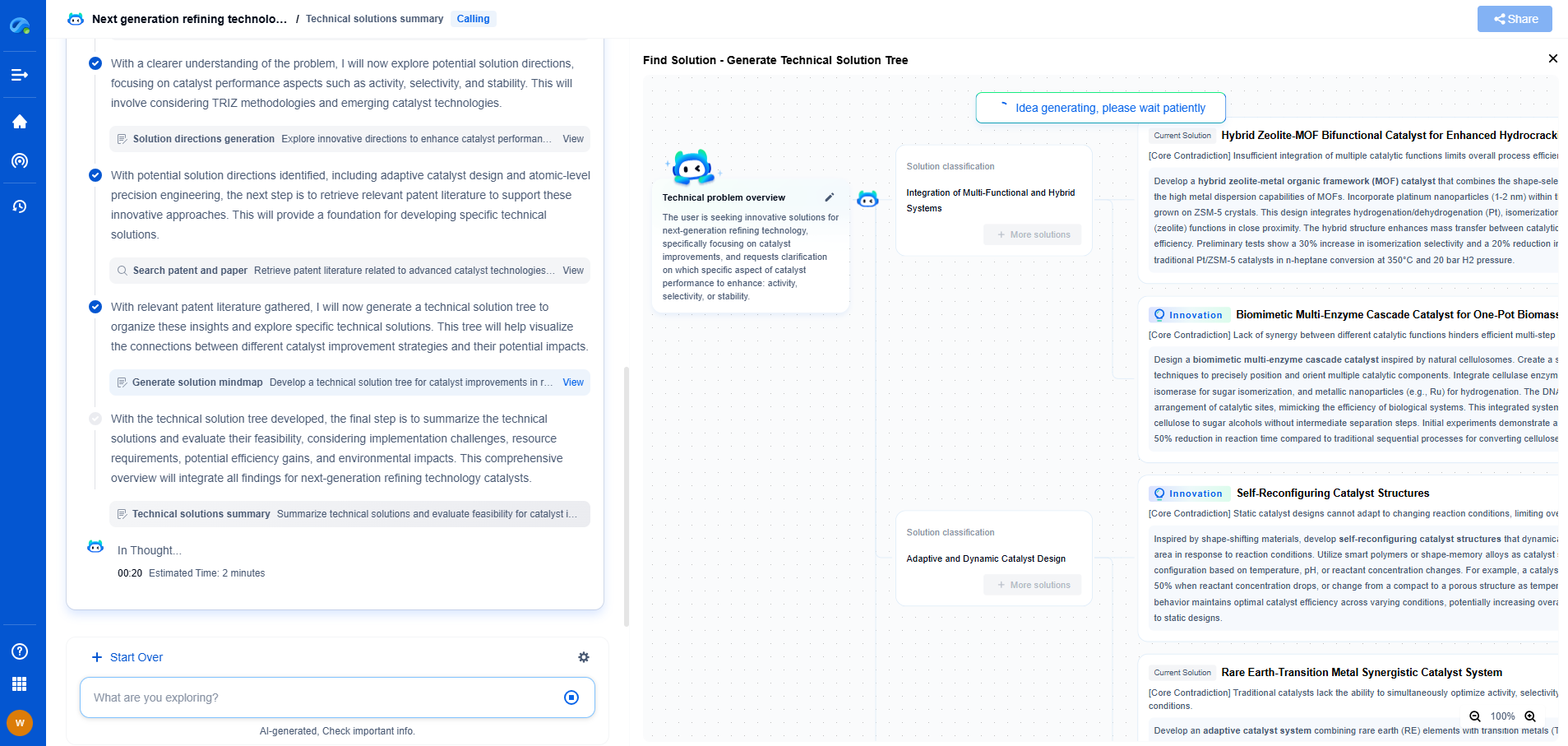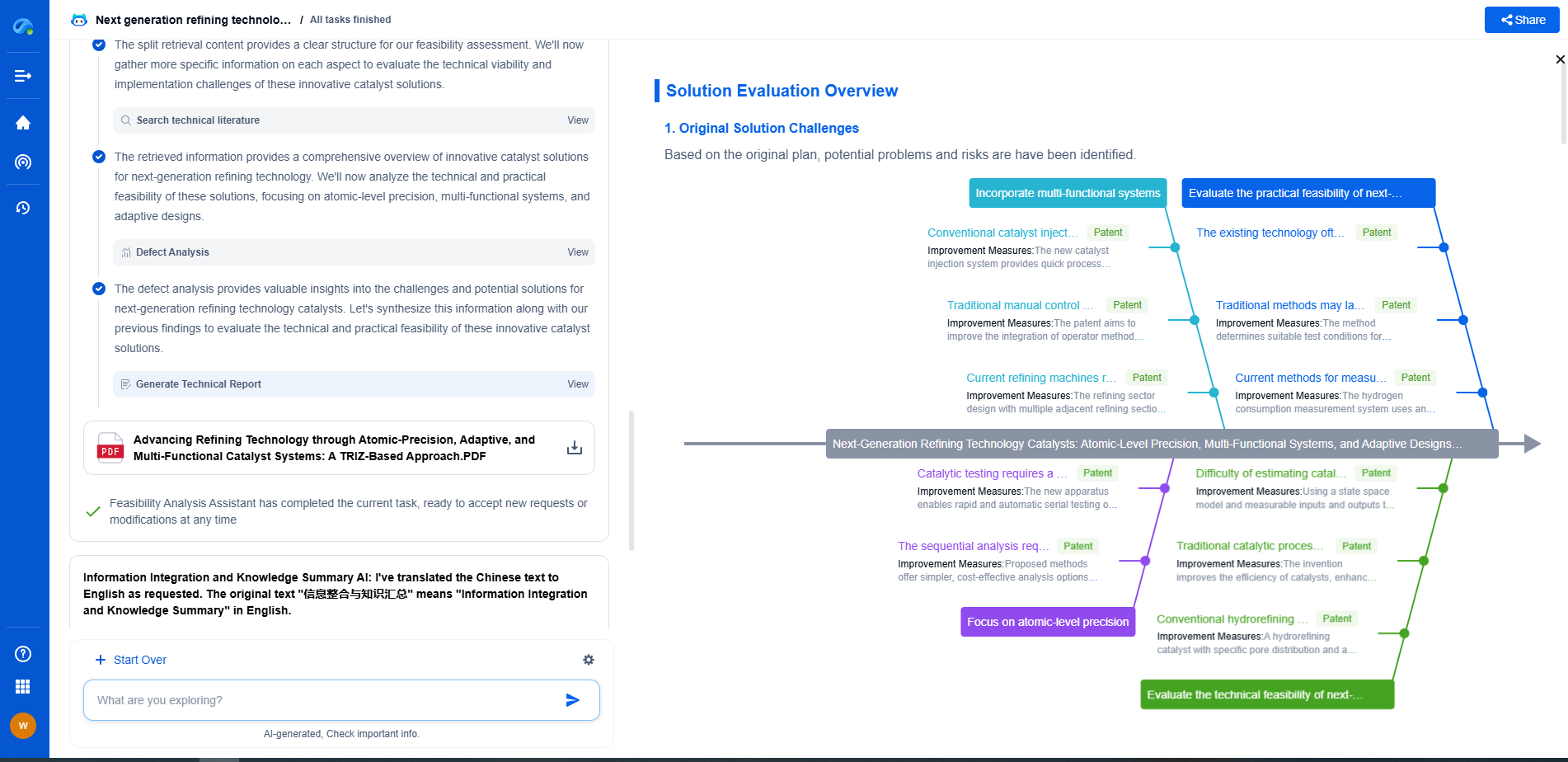Carbon Fiber vs. Fiberglass Blades: Which Is Better for Wind Turbines?
JUN 26, 2025 |
As the world continues to transition towards renewable energy sources, wind power has emerged as a leading contender in the quest for sustainable energy solutions. At the heart of wind energy technology are the turbine blades, which capture and convert wind energy into electrical power. The materials used to construct these blades play a critical role in their performance, efficiency, and durability. Among the most debated materials in this realm are carbon fiber and fiberglass. This blog delves into the advantages and disadvantages of each material to help determine which is better suited for wind turbine blades.
Understanding the Basics
Before diving into a comparison, it's important to understand the fundamentals of these materials. Carbon fiber is a composite material known for its high strength-to-weight ratio, rigidity, and stiffness. It is made from carbon atoms bonded together to form a long chain, which is then woven into a fabric. Fiberglass, on the other hand, consists of fine glass fibers woven into a fabric, and is known for its flexibility, affordability, and corrosion resistance.
Structural Strength and Durability
One of the key considerations in the choice of material for wind turbine blades is structural strength. Carbon fiber is renowned for its exceptional strength and stiffness, which allows blades to be longer and more slender without compromising structural integrity. This is particularly important for offshore wind farms where larger blades can capture more wind energy. Fiberglass, while also strong, is more flexible and better at absorbing impacts, such as those from debris or bird strikes, which can add to the longevity of the blades.
Weight and Efficiency
The weight of turbine blades is a critical factor in their efficiency. Lighter blades can start turning at lower wind speeds, thus generating energy more efficiently and effectively. Carbon fiber, due to its high strength-to-weight ratio, tends to be lighter than fiberglass, which can contribute to improved performance and energy yield. However, for smaller onshore wind turbines where the difference in weight is less impactful, fiberglass remains a competitive option.
Cost Considerations
Cost is a major factor in material selection. Fiberglass is significantly cheaper than carbon fiber, making it an attractive option for many wind turbine manufacturers, especially those focused on cost-effective solutions. While carbon fiber can offer performance advantages, these come at a higher financial investment. For large-scale projects with substantial budgets, the long-term performance benefits of carbon fiber may justify the cost. However, for projects with more constrained budgets, fiberglass is often the preferred choice.
Environmental Impact
In terms of environmental considerations, both materials have their pros and cons. Fiberglass manufacturing is generally less energy-intensive than carbon fiber, resulting in a smaller carbon footprint during production. However, carbon fiber blades, with their potential for longer lifespan and higher energy efficiency, may offset their initial environmental cost over time. Additionally, the recyclability of both materials remains a challenge, though advances are being made in recycling technologies.
Conclusion
In determining whether carbon fiber or fiberglass is better for wind turbine blades, it ultimately depends on the specific requirements and constraints of the wind energy project. Carbon fiber offers superior performance in terms of strength, weight, and efficiency, making it ideal for large-scale, offshore projects where these factors are crucial. Conversely, fiberglass provides a more cost-effective solution with satisfactory performance for smaller onshore installations. As technology continues to evolve, ongoing research and development will likely further influence material choice, driving innovation towards more sustainable and efficient wind energy solutions.
Empower Your Wind Power Innovation with AI
In the fast-evolving landscape of wind turbine technology—where aerodynamic optimization, generator efficiency, and structural innovation are critical—staying ahead requires more than just expertise. It requires intelligent tools that accelerate R&D and protect your competitive edge.
Patsnap Eureka is your AI-powered research assistant, designed specifically for innovators like you working at the forefront of Wind Motors. Whether you're analyzing blade design trends, exploring novel gearbox architectures, or navigating complex global patent landscapes, Eureka streamlines the entire process with precision and speed.
👉 Experience how Patsnap Eureka can revolutionize your R&D and IP strategy. Request a demo today and power up your next breakthrough.
- R&D
- Intellectual Property
- Life Sciences
- Materials
- Tech Scout
- Unparalleled Data Quality
- Higher Quality Content
- 60% Fewer Hallucinations
Browse by: Latest US Patents, China's latest patents, Technical Efficacy Thesaurus, Application Domain, Technology Topic, Popular Technical Reports.
© 2025 PatSnap. All rights reserved.Legal|Privacy policy|Modern Slavery Act Transparency Statement|Sitemap|About US| Contact US: help@patsnap.com

